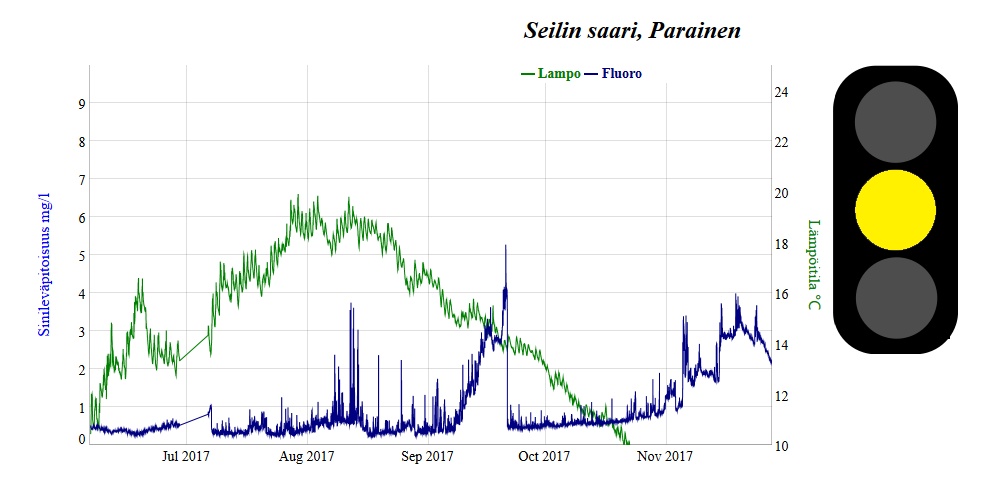Information on blue-green algae
Blue-green algae (BGA), also known as cyanobacteria, most commonly occur in late summer and early fall when water temperatures reach ca 20 °C. At these temperatures, cyanobacteria grow rapidly and may create a bloom within a few days. The weather conditions affect the occurrence of BGA, high winds can mix the water and, sometimes make the observation of algal blooms difficult. Automated monitoring stations provide accurate information on the amount of BGA in the water.
Some blue-green algae can produce toxins, some do not. Concentrations below 2 mg/l are generally considered safe. Swimming or wading in water with >2 mg/l of cyanobacteria may cause e.g. minor skin rashes, headache, nausea and other, sometimes even serious, health problems. It is not recommended to swim or have contact with the water when the concentration are above 10 mg/l. Children and pets are at higher risk of exposure because they are more likely to play near the shoreline and drink water while swimming. Pets can also lick and swallow cyanobacteria that may be caught in their fur. Showering after swimming in a natural waterbody will help reduce your risk of contracting infections and rashes.
Algal blooms in Seili
Algal blooms are monitored at Seili post pier on weekly basis. Current information is available at Järviwiki webpage.

Algal blooms in Seili in 2017. Blue-green algae content is shown in blue, temperature in green. Traffic light: 0-2mg/l = low level, 2-10mg/l = moderate level, >10mg/l = high level of BGA.
The automated monitoring station measures the amount of blue-green algae (mg/l) and sea water temperature (°C) in every 30 minutes. The station is located in the Seili post pier (Postilaituri). The monitoring is carried out by the Turku University of Applied Sciences (TUAS). The station automatically transfers the results 4 times a day to the TUAS’s serves and from there on to this website. The station is not in use in 2018.
